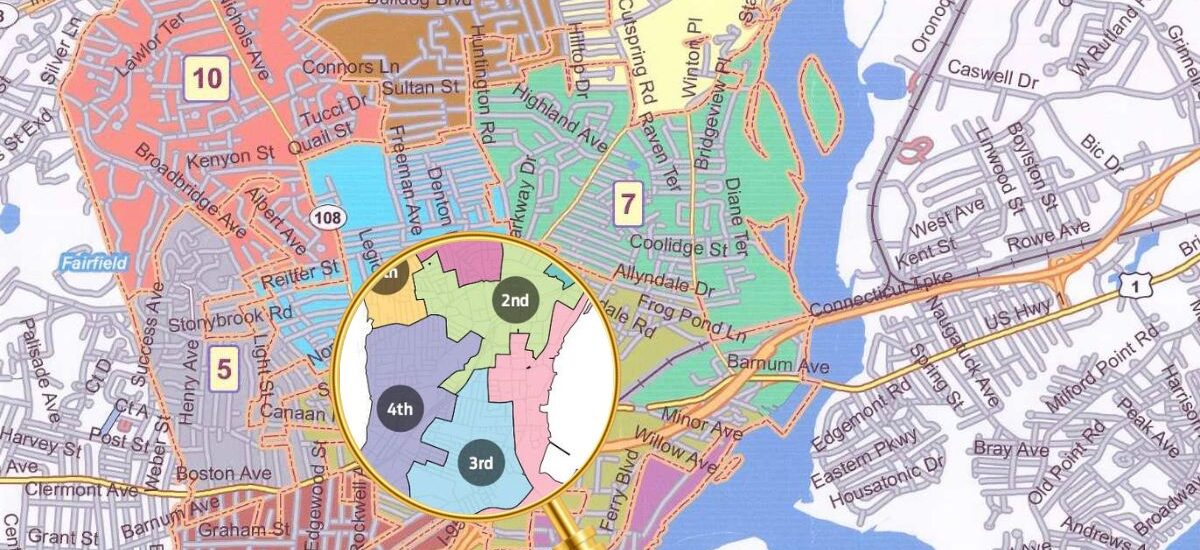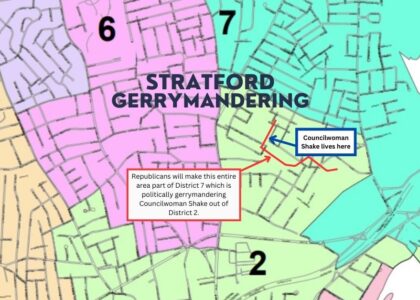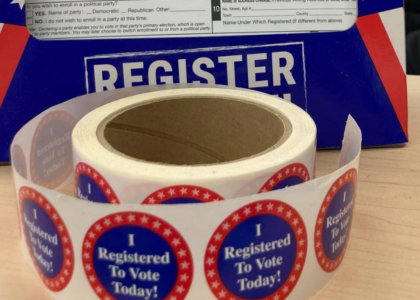How Redistricting and Gerrymandering Consolidated Power for the Republicans for Over Two Decades!
Imagine it is 2003 and you want to hold power for the next 20 years. What would you Do? Here’s what the Republicans did. They split Oronoque Village into two separate districts to solidify control in the North End. Fast forward ten years and they eroded the power of the residents in the South End.
The 2023 process has started and with a Republican majority once again, there has been no attempt to make this civic action, one of the most important undertakings in a democracy, engaging. There is no sense of urgency and no desire to include the public. Democrats requested public input during the Commission meetings and were told that public comments will not be heard until after the Commission has approved the new voting district boundaries and map and it is presented to the Town Council.
Democrats were prepared to begin work, ready with map and district population data, but were stalled immediately, leaving key issues unresolved to this day. Multiple attempts to secure necessary agreement on our starting point before the next meeting have yet been answered.
Who Decides The Voting Districts?
Elections matter. Because the Republican Party has a majority in the Town Council, they have two of the three openly appointed seats on the Commission. In February 2023, the Stratford Town Council appointed five members to the Election District Revision Commission, comprised of:
- Lou DeCilio, the Republican Registrar of Voters and the Chair of the Stratford Republican Party
- James Simon, the Democratic Registrar of Voters
- Chris Pia, the Republican Chair of the Town Council
- Jim Connor, the Republican Town Councilor for District 8 and the Majority Leader of the Town Council
- Kim Rice, the Democratic Town Councilor for District 4
Their first meeting was held on March 16th and Jim Connor was appointed Commission Chair. Kathleen Callahan, as the Democratic Deputy Registrar of Voters, served in James Simon’s absence. She raised two issues at that meeting: agreement on the data being used to determine population size; and the formula for defining individual district population, both of which she brought to the town attorney for review, with a request to be addressed before the next meeting.
The deadline to complete the redistricting process is June 14, 2023. All other cities and towns in the state have already completed their maps. The Republicans and their authoritarian decision-making waited until the last minute. There has to be more oversight and accountability of the process. We cannot afford to have them push through any plans at the eleventh hour that will cement their control of our town for another 10 years.
Brief Redistricting Overview
Every 10 years following the US Census, federal law calls for a review and redrawing of national, state, and local district lines to account for shifts in population that have likely led election districts to no longer be equally distributed. This is reinforced in Connecticut state law and in our Stratford Town Charter, where it also indicates district boundaries are rearranged “where necessary” if population changes don’t indicate significant modifications.
The 2021 Connecticut General Assembly Redistricting Project states, “The purpose of redistricting is to establish and maintain voting districts that are faithful to the principle of one-person, one-vote.” How and where districts are drawn often shape our ability to elect representatives of our choice – that may or may not share your vision or priorities for your district – and can provide or deny communities with equal access to political representation.
“Equally distributed” is often left up to states and towns but there is federal law and guidance that the Stratford Democrats have used as we approached the 2023 redistricting process based on the 2020 US Census. Given the most recent two cycles we’ve experienced in town and the importance of this essential democratic endeavor, we want to share our process up to this point.
Recent Redistricting In Stratford
It’s commonly known that the party in charge of the process usually benefits the most, as they can customize the boundaries to their advantage. Stratford’s district lines have been manipulated to give the Republicans the political advantage for the past 20 years and they have held control of the Town Council for all but a brief moment in time. The changes made in this redistricting cycle will impact us for another decade and it is critical we entered this process well prepared.
Through the 2000 US Census, Oronoque Village residents lived in District 8. Could it be that in 2003, Republicans used their access to your voting history, location, and other personal information, to determine that the people of Oronoque Village, a senior living community, had high voter turnout and largely voted Republican? By carving out the north side of the complex into District 9, the majority party increased the likelihood of two solidly partisan districts.
As Republicans’ political power grew, so did the desire to embed it in our local political structure. During the 2013 election redistricting process, the Stratford Republicans decided to switch the names of election District 2 and District 3 to gain control of the land use boards. No false claims can disguise the reality that this power grab used the gerrymandering technique of packing which produced racial inequities and limited representation.
Why Should You Care About Redistricting?
Here’s a quick summary of how land use board representation works. Our town has five land use zones, represented by an elected Commissioner, as below:
- Zone I: D1 and D2
- Zone II: D3 and D4
- Zone III: D5 and D6
- Zone IV: D7 and D8
- Zone V: D9 and D10
There is one Commissioner from each Zone on our Planning Commission, Zoning Commission, and Zoning Board of Appeals. By switching the names of District 2 and District 3, the Republicans in charge of creating the voting maps diluted the minority vote. Since 2013 the residents in District 3 and District 4, both of which are largely made up of minority residents, are now represented by a single seat on the 5-member Commissions, or 20% representation. Stratford’s total town population is 59% white and 41% people of color.
Stratford Democrats' Approach to Election Redistricting
Stratford Democrats believe land use boards are vital to the growth and wellbeing of our town and play a key role in our vision of the future. They are responsible for reviewing and approving development proposals, issuing permits, and other responsibilities. That power impacts the economic development of our town, the characteristics of our town and neighborhoods, and the protection of the public health, safety and welfare. Where, what, and how we develop and redevelop comes before these commissions and boards for their oversight and review.
As we headed into the 2023 process, our primary goals were to produce municipal election districts that offer representation equal to their population, for all elected offices, and to restore public confidence in the process. We are well prepared with US Census data, charts, maps, and rationale for our submission and believe it considers the best interests of all Stratford residents.










